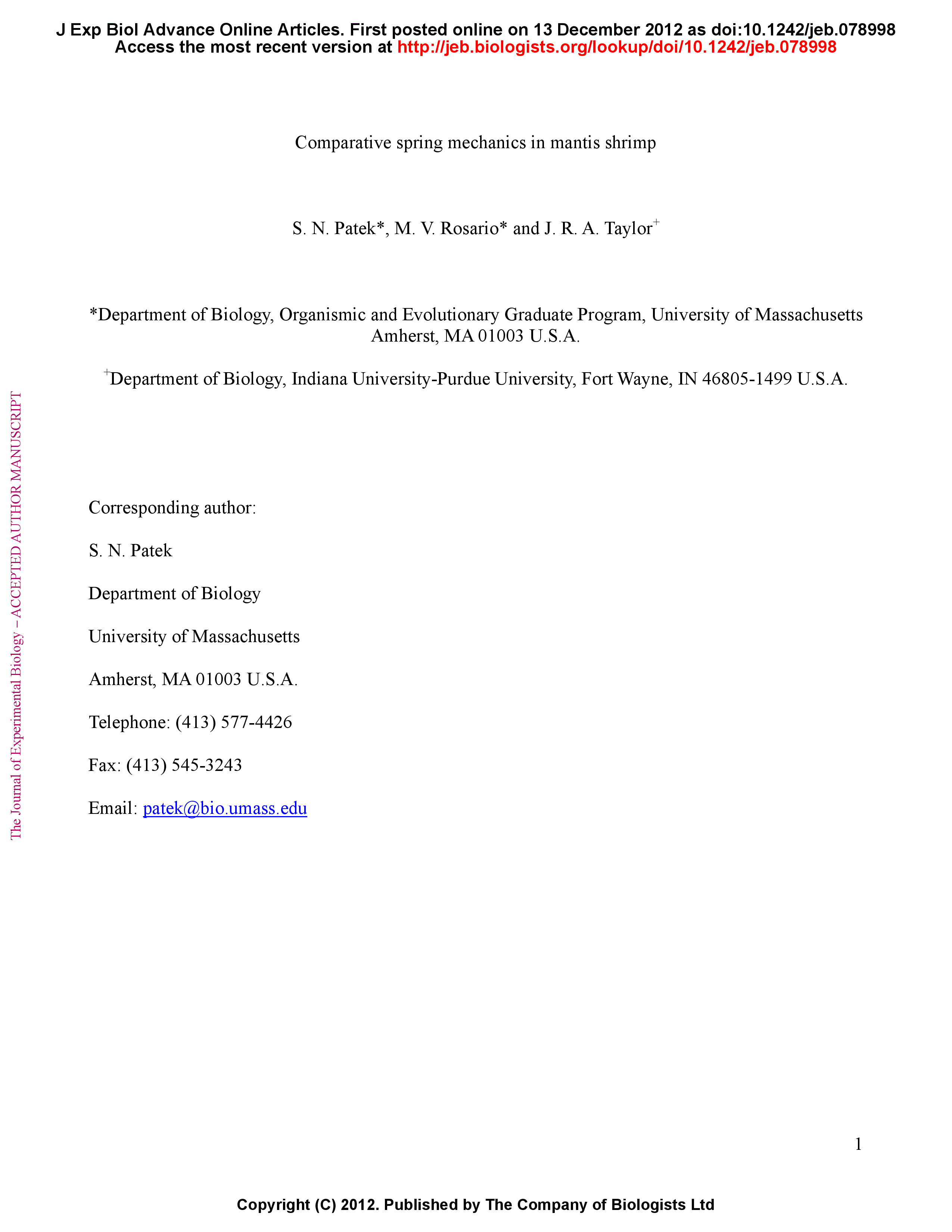Summary
Elastic mechanisms are fundamental to fast and efficient movements. Mantis shrimp power their fast raptorial appendages using a conserved network of exoskeletal springs, linkages and latches. Their appendages are fantastically diverse - ranging from spears to hammers. We measured the spring mechanics of 12 mantis shrimp species from 5 different families exhibiting hammer-shaped, spear-shaped and undifferentiated appendages. Across species, spring force and work increase with size of the appendage and spring stiffness is not correlated with size. Species that hammer their prey exhibit significantly greater spring resilience compared to species that impale evasive prey (i.e., "spearers"); mixed statistical results show that species that hammer prey also produce greater work relative to size during spring loading compared to spearers. Disabling part of the spring mechanism, the "saddle", significantly decreases spring force and work in three smasher species; cross-species analyses show a greater effect of cutting the saddle on the spring force and stiffness in species without hammers compared to species with hammers. Overall, the study shows a more potent spring mechanism in the faster and more powerful hammering species compared to spearing species while also highlighting the challenges of reconciling within-species and cross-species mechanical analyses when different processes may be acting at these two different levels of analysis. The observed mechanical variation in spring mechanics provides insights into the evolutionary history, morphological components and mechanical behavior that were not discernible in prior single-species studies. The results also suggest that, even with a conserved spring mechanism, spring behavior, potency and component structures can be varied within a clade with implications for the behavioral functions of power-amplified devices.








